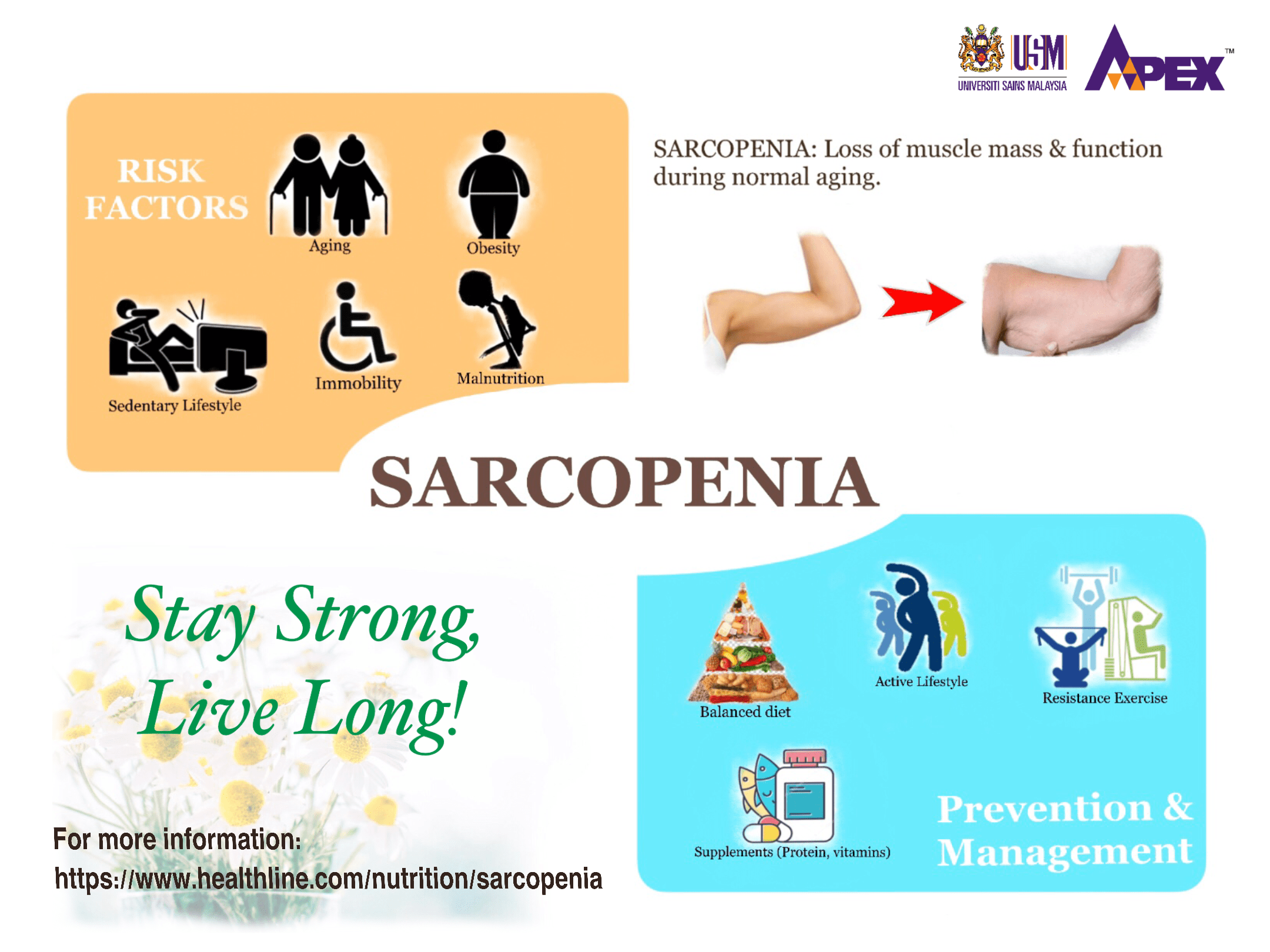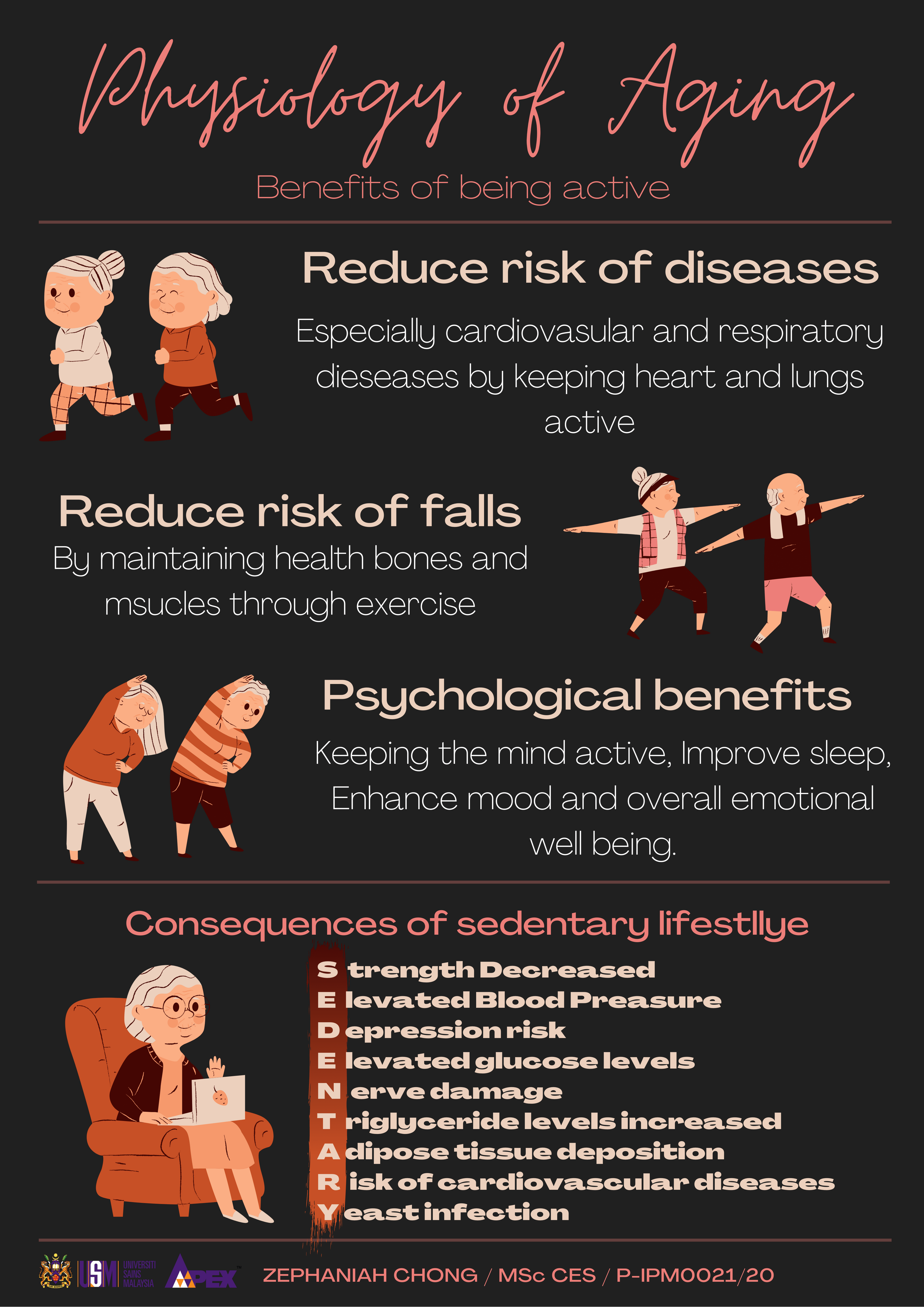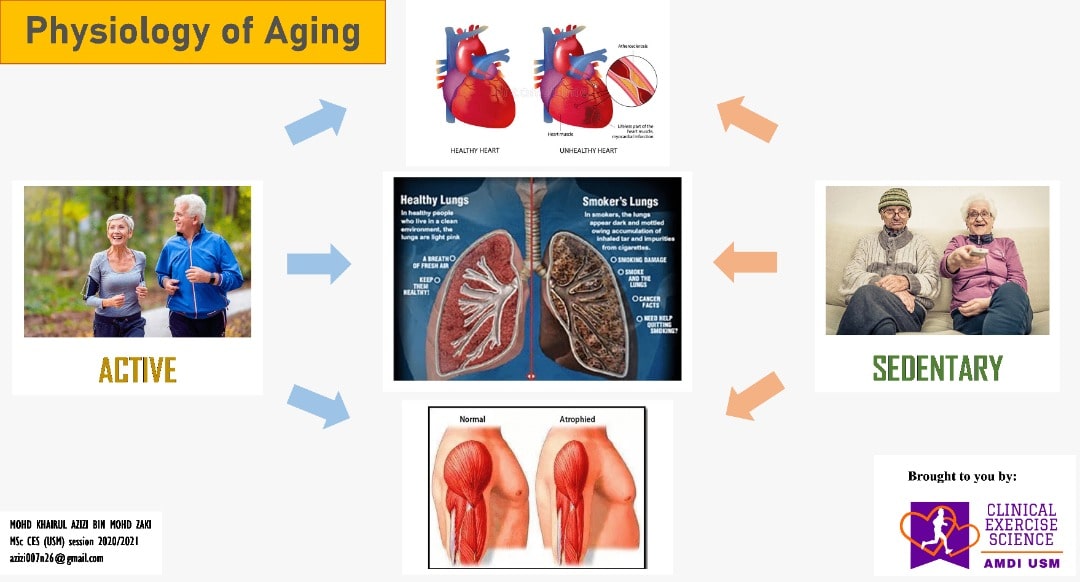.jpg)
Physiology of Aging
.jpg)
.jpg)
Aging
is the accumulation of physical changes over time. People said that if a person
spends much of the time napping then in the address book will the majority of
names that start with Dr, then there is likely that this individual might in
the aging period. As of the beginning of 2020, the percentage of the Malaysian
population aged 65 years and above has increased from 6.7% in 2019 to 7.0%.
Director of the National Institute on Aging (NIA), Dr. Richard J. Hodes said
that “People are living longer, but that does not necessarily mean that they
are living healthier”. Aging is not a disease, but it occurs at different
rates do not generally cause symptoms but the cellular and physiologic will
deteriorate over time which increased mortality with age following maturation,
increased vulnerability to disease, and decreased ability to adapt to stress.
Aging is affected by both intrinsic and extrinsic influences. Intrinsic aging
is the natural aging process. As we age,
the development of collagen decreases and cell turnover slows down. External
aging is caused by sunlight and stress that speed up the entire aging process.
Why Does Aging Happen?
Theories on aging have been around
for more than two thousand years. Ancient medical scientist, Galen believed
that aging is caused by the accumulation of waste matter in the body from the
beginning of life. These changes caused a slow increase in dryness and coldness
of the body. Meanwhile, Roger Bacon suggests a “wear and tear” theory that
aging is the result of abuses and insults to the body system. He suggests that
good hygiene might slow the aging process. In addition, Charles Darwin
attributed aging to the loss of irritability in the nervous and muscular
tissue. One of the popular aging theories is the Programmed senescence theory
that a process by which organisms through proceed physical deterioration of the
body. This theory proposed a degenerative process by which a cell loses its
ability to divide, grow and function which ultimately ends in death.
Age-related Physiological Changes
As we age, our sweat glands have
reduced production and heart rate, and skin blood flow will decrease as well.
The changes in the skin such as loss of subcutaneous fat that increase
vulnerability to pressure sores, less insulation of body to cold, and thickened
fingernails and toenails with some remaining pigment cells enlarge know as “age
spots” will be obvious. There will also change in the musculoskeletal system
where the muscle mass will be decreased, deterioration in joint cartilage, and
a decrease in bone density. All these changes, however, can be preventable or
reversible with regular physical activity.
Exercise
and aging
A person living a sedentary lifestyle is
often has a high risk for vascular aging due to reduction in vasodilation,
cardiac and arterial compliance, as well as endothelial dysfunction. However,
if a person living an active life, it will reduce the risk for vascular aging
due to less arterial stiffening and endothelial dysfunction. Many studies show
that a small change in physical activity or fitness in individuals who are
physically unfit or inactive can lead to a significant improvement in health
status, including a reduction in the risk of chronic disease and premature
mortality.
Exercise prevents cardiovascular disease
and death from the disease. The maximal oxygen consumption (VO2max) declines
with aging and is increased by regular exercise. VO2max is higher in trained
elderly persons and declines with age in both a trained and untrained elderly person
to become almost equal. Exercising at 45-50% of VO2max able to facilitate fat
loss and then start to metabolize carbohydrates that may decrease the risk of
diabetes. 12 weeks of high intensity and resistance training in younger and
older adults have shown that the oxidation capacity increased as well as
increased in muscle mass and strength.
Regular exercise helps to increase or
maintain control age or-related decreases in muscle mitochondrial mass and
antioxidant defenses. Exercise training can also result in 100% increments in
mitochondrial mass, oxidative (respiratory enzymes), and related enzymes for
defense against oxygen-free radicals. Studies have shown that gene expression
of Nrf2; a basic leucine zipper (bZIP)
protein that may regulate the expression of antioxidant proteins that protect
against oxidative damage triggered by injury and inflammation, and other
antioxidant defense genes were significantly increased in skeletal muscle of
fit males when partaking in exercise lasting more than 90 minutes. However, in
participants who had never exercised continuously, there were no effects on the
gene expression of Nrf2. The more we exercise, the greater this response comes,
and like everything, the body adapts to higher levels of stimulation to produce
antioxidants, so naturally, our body produces more even when at rest.
Sedentary people lose large amounts of muscle mass
(20-40%) and 6% per decade loss of Lean Body Mass (LBM). The aerobic activity
not sufficient to stop this loss. Only resistance training can overcome this
loss of mass and strength. Balance and flexibility training contributes to
exercise capacity. Aging appears neither to impair the ability to improve
muscle strength nor to prevent muscle hypertrophy. When older men (60 to 70 years
old) did strength training for 12 weeks at 80% of their one-repetition maximum
for extension and flexion of both knees, their extension strength is increased
by 107% whilst flexion strength increased by 227%.
What is the type of exercise that will
slow aging?
In the study “Resistance Exercise Reverses Aging in Human Skeletal Muscle’, it was proven that six months of progressive resistance training made the gene expression pattern of aging mitochondria become significantly younger. Scientists measured telomeres in twins to gauge the effect of exercise on aging, a study that proved the research participants who spent more than 3 hours each week lifting weights had longer telomeres than subjects 10 years younger, suggesting that individuals who eschew placing a vigorous load on their body may wind up biologically older by 10 years. Beyond the age of 30, we lose approximately six pounds of muscle mass per decade and these findings indicate that intervention designed to increase skeletal muscle mass (such as weight training) are critical weapons in the fight against obesity and obesity-related ailments, including diabetes, heart disease, stroke, hypertension, and cancer. Meanwhile, another study found that younger people participating in HIIT showed a 49-per-cent increase in mitochondrial capacity and the older group saw 69-per-cent. Mitochondria are the cells’ powerhouses, responsible for producing the molecule that transports chemical energy within cells.
Any kind of exercise is better than
none. Choose the one that you comfortable with. You know what is best for you.
Healthy life, long life!
The infographics simplified the exercise and aging as shown below.




Estebsari F, Dastoorpoor M, Khalifehkandi ZR, Nouri A, Mostafaei D, Hosseini M, Esmaeili R, Aghababaeian H. (2020). The Concept of Successful Aging: A Review Article. Curr Aging Sci. 13(1):4-10. doi: 10.2174/1874609812666191023130117.
By:
Hazwani Ahmad Yusof @ Hanafi,
Michelle Thang Ru Wen
Mohd Khairul Azizi Bin Mohd Zaki
Vishanth Rathakrishnan
Wan Nurul Islamiah Binti Wan Ahmad
Zephaniah Chong En Wei
Lifestyle Science Cluster, AMDI USM